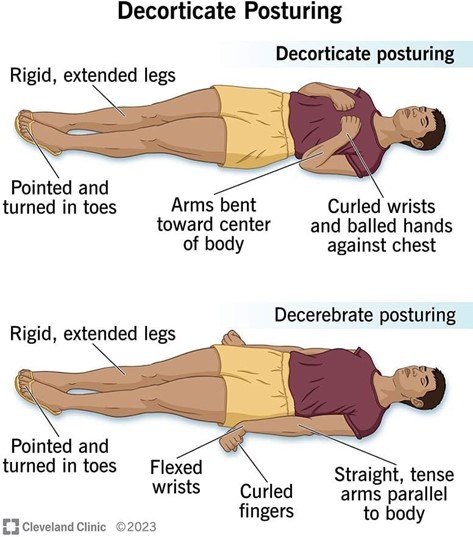A nurse in a long-term care facility finds an older adult client lying on the floor next to the bed. Which of the following actions should the nurse take?
Check the client for injuries.
Obtain a prescription for medication to sedate the client.
Call the family and ask them to make arrangements for someone to sit with the client.
Assist the client back into bed and apply restraints.
The Correct Answer is A
The first action the nurse should take is to check the client for injuries. The nurse should assess the client for any signs of injury or trauma and provide appropriate care as needed.
Obtaining a prescription for medication to sedate the client, calling the family and asking them to make arrangements for someone to sit with the client, and assisting the client back into bed and applying restraints are not appropriate initial actions for the nurse to take in this situation. These actions may be considered after the client has been assessed for injuries and their immediate needs have been addressed.
Nursing Test Bank
Naxlex Comprehensive Predictor Exams
Related Questions
Correct Answer is D
Explanation
a. Decorticate posturing is marked by the flexion of the arms, with the hands clenched into fists and the legs extended and internally rotated.
b. External rotation of the lower extremities is not a characteristic of decorticate posturing. In decorticate posture, legs are held out straight.
c.Pronation of the hands is characteristic of decerebrate posturing, where the arms are extended and pronated.
d. In decorticate posturing, the lower extremities typically exhibit plantar flexion. Additionally, the upper extremities show flexion of the arms, wrists, and fingers with adduction of the arms.

Correct Answer is A,B,D,C
Explanation
The correct sequence of steps the nurse should follow when a client begins to experience a tonic-clonic seizure is:
- Remain with the client and call for help.
- Place the client in the lateral position.
- Check the client for injuries.
- Reorient and reassure the client.
The nurse should first remain with the client and call for help to ensure that additional assistance is on the way. Next, the nurse should place the client in the lateral position to help keep their airway open and prevent aspiration. After the seizure has ended, the nurse should check the client for injuries that may have occurred during the seizure. Finally, the nurse should reorient and reassure the client, who may be confused or disoriented after the seizure.
Whether you are a student looking to ace your exams or a practicing nurse seeking to enhance your expertise , our nursing education contents will empower you with the confidence and competence to make a difference in the lives of patients and become a respected leader in the healthcare field.
Visit Naxlex, invest in your future and unlock endless possibilities with our unparalleled nursing education contents today
Report Wrong Answer on the Current Question
Do you disagree with the answer? If yes, what is your expected answer? Explain.
Kindly be descriptive with the issue you are facing.
